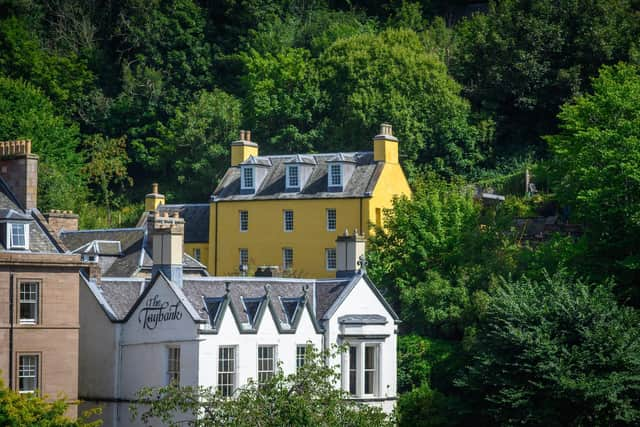House built for Scottish piper imprisoned during 1745 Jacobite rising goes up for sale
An 18th-century house built for a piper captured and imprisoned during the 1745 Jacobite rising has gone up for sale.
Sundial House stands out in the pretty town of Dunkeld with its bright yellow finish and view of the River Tay, with the story of its former highly-regarded resident included in the £695,000 asking price.
Advertisement
Hide AdAdvertisement
Hide AdThe house was built around 1760 for John Ballantine – a piper for Lord George Murray, the 1st Duke of Atholl and Jacobite commander during the doomed campaign.


Ballantine, a piper in the Atholl Brigade, was captured in Carlisle in December 1746 during the Jacobite’s retreat north and later went on trial at York Castle, where he was acquitted after claims he was a supporter of George II and forced into action.
He returned to Dunkeld and later lived in the house with his wife Jannet with their names – and the year 1757 – carved into the sundial that gives the house its name.
The house has now been completely renovated by current owner Philip Miller — former chief executive of the land and property developer Miller Developments – who has brought the property back from the brink after it partially collapsed during a rainstorm several decades ago.
A statement from Savills said: "Externally, its traditional characteristics, including the original sundial, were beautifully restored and Sundial House is now one of Dunkeld's most picturesque and iconic buildings.”
The three-storey property has three bedrooms, three bathrooms and two sitting areas, a sheltered south-facing terrace and a recently added sunroom, which has views over the river. The sundial that bears Ballantine's name, which was discovered when the Millers started to hack back the garden, now takes pride of place in the house’s grounds.
Ballantine was captured in December 1745 after the retreat from Derby, with the city’s Jacobite-held garrison then falling to forces led by the Duke of Cumberland. He was one of three pipers among 193 prisoners who were sent to York , where he appeared for trial the following October.
An account in the Scots Magazine, later included in Volume III of the Chronicles of the Atholl and Tullibardine Families, held by National Library of Scotland, detailed the trial.
Advertisement
Hide AdAdvertisement
Hide AdIt said: “Several witnesses deposed that he was forced into service by a party of the rebels, who took him by violence out of his bed, threatened to stab him if he did not go with them and did not allow him time even to put on his clothes; and that afterwards they placed a guard over him to prevent his making his escape.
“When the Jury returned their verdict Not Guilty, the poor fellow was in such a transport of joy that he threw his bonnet up to the very roof of the court, and cried out: ‘My Lords and Gentlemen, I thank you. Not Guilty! Not Guilty! Not Guilty! Pray God bless King George forever; I’ll serve him all the days of my life.”
He then ran out into the castle yard, with his irons on, took up a handful of channel-water – and drank his Majesty’s health.
Comments
Want to join the conversation? Please or to comment on this article.